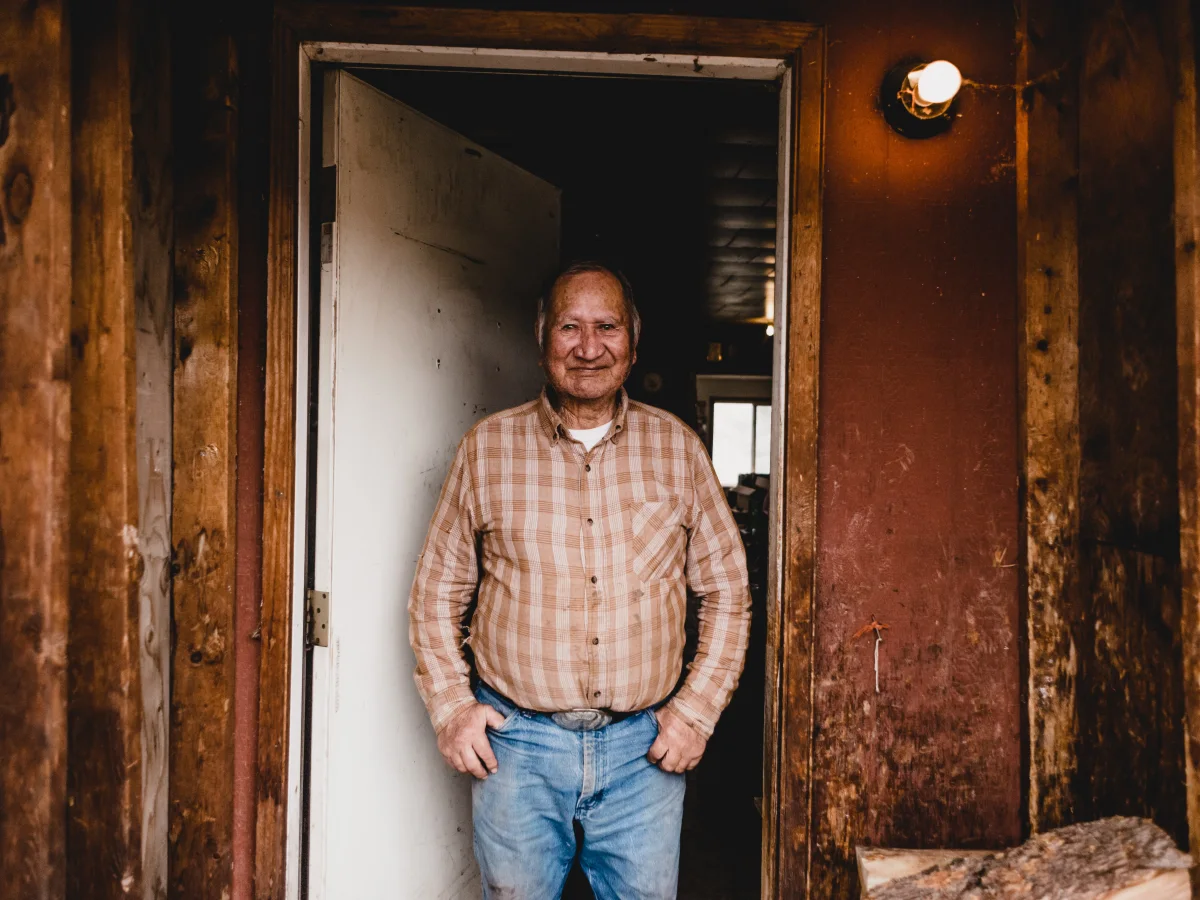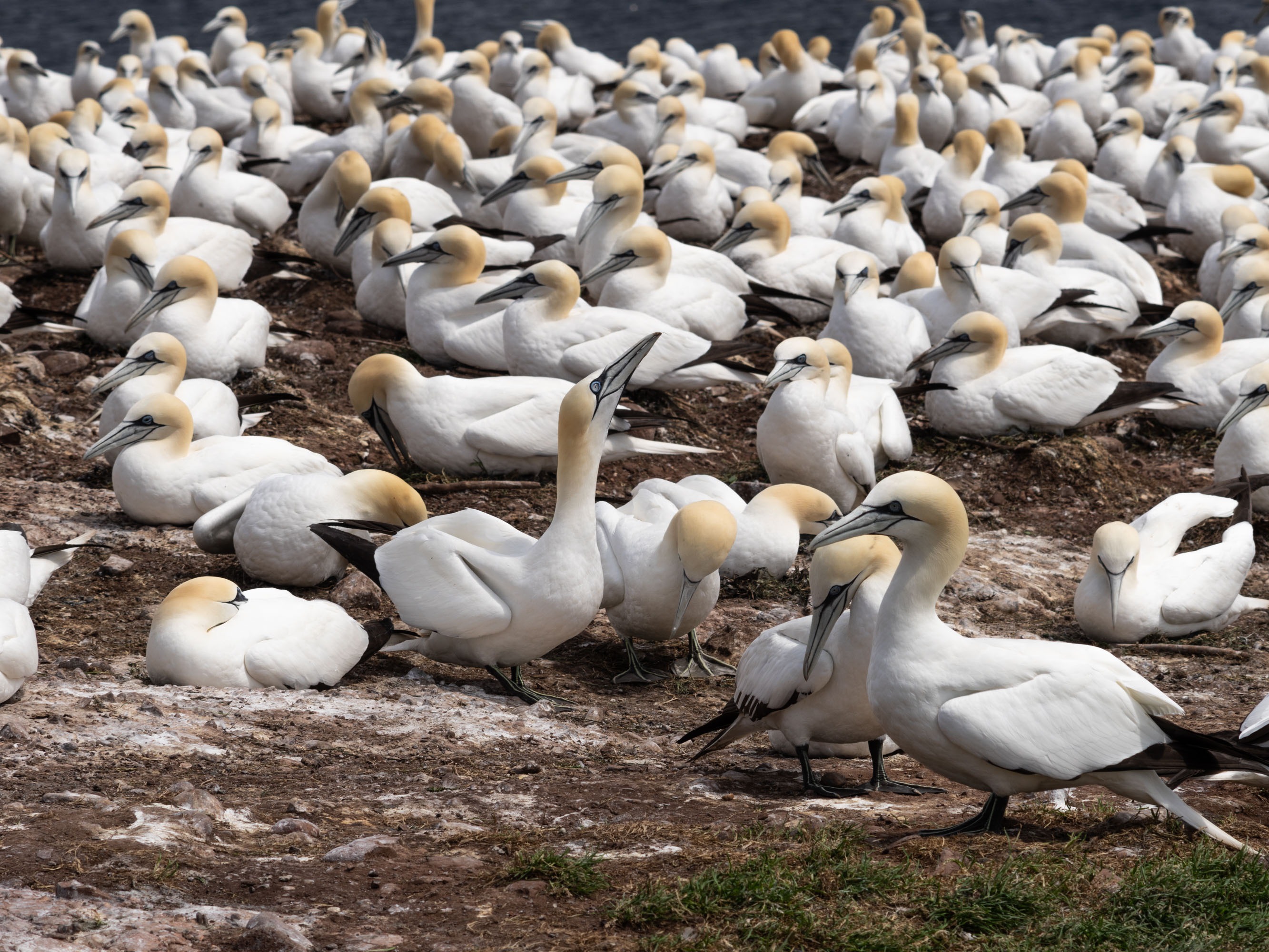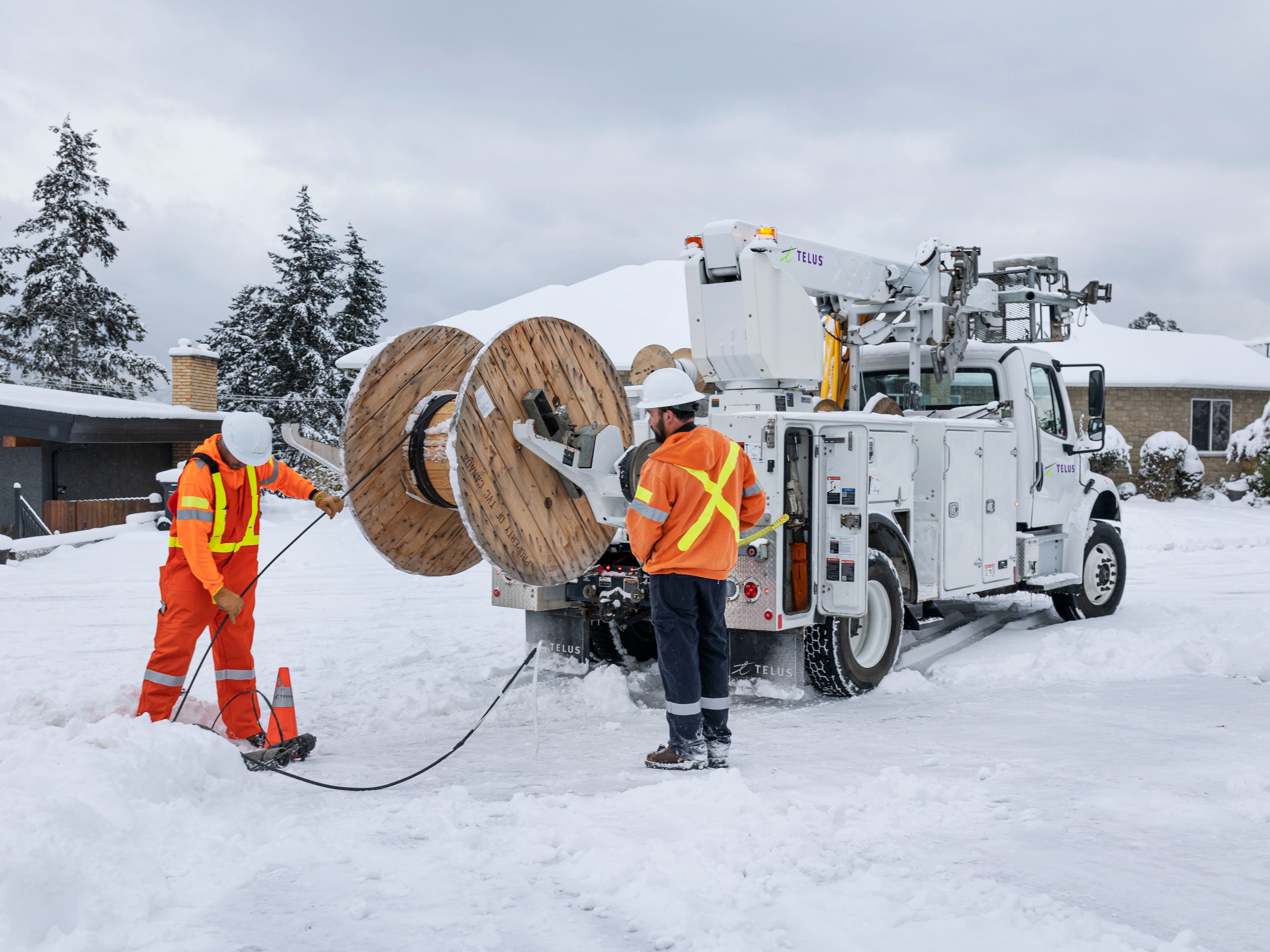
Connecting Canadians
How fibre optic networks are fuelling excitement in education, language and cultural identity
Above: Tl’esqox Community member Fred Palmantier Riske Creek, BC. Photo credit: Kelsie Marchand
Tl’esqox, meaning “muddy creek,” for the creek that flows through the community, is one of six Tŝilhqot’in communities that make up the Tŝilhqot’in National Government, spanning between the Fraser and Chilcotin Rivers in British Columbia.
Language reclamation is a priority for the community. With only about 200 fluent Athapaskan speakers nationwide, Tl’esqox leadership is taking control of their education system as a critical step in “passing on language and culture to the next generation,” says Chief Francis Laceese.
“I am fortunate that I can speak my own language. I had to learn English when I was little. And there are still some Elders who only know our language and very little English.”
Since TELUS PureFibre was enabled in 2020, with co-funding from Pathways to Technology, a project managed by ANTCO and Interior Health, Tl’esqox has been working diligently to leverage the next-generation connectivity to generate increased excitement in the youth and to maintain pride in the Tŝilhqot’in identity.
“It’s opened up a lot of different possibilities, being connected. We are even putting in place plans to develop a university in our Nation that will leverage our language speakers as professors in our community,” says Chief Francis.
Government policies have made the digital divide in Canada worse, leaving some communities without optimal internet. Get informed.
Critically, the new technology is opening up Tl’esqox knowledge, culture and language to the world. As the Nation completes work on their dictionary, – which unlike a western definition of dictionary, contains a rich tapestry of words, songs and ceremonies – delegates from other countries are showing interest in participating in knowledge sharing.
“A lot of it is new to me,” says Chief Francis. “For the longest time, I didn’t even have a cell phone. Now we are taking over our own education, to instil the language, the cultural identity, and who we are as Tŝilhqot’in people.”
Tl’esqox leadership is leveraging advanced broadband connectivity to ensure no child, youth, or adult is left out of educational opportunities.
“It’s made a big difference for us to be able to connect and access education, to not be limited. There are many universities that offer online courses. It has allowed everyone, from kindergarten to high school to adults, there are a lot more options for people now,” affirmed Chief Francis.
Children and youth who previously had to travel 45 minutes each way to Williams Lake to attend elementary and high school, can now attend school from the comfort of their community.
With over half of the membership living outside the community, the ease of digital connections is also providing limitless opportunity for increased community building and the sharing of intergenerational knowledge regardless of location.
“We used to have a lot more general assemblies, if we are working on different projects in the community we can zoom them in, we can invite members living across Canada to participate and have their input into the community,” says Chief Francis. “We have been able to maintain numbers for events because of connectivity.
Through world-leading network technology, underpinned by a long-standing passion for creating stronger, healthier communities, TELUS is committed to supporting the goals of Indigenous Peoples. TELUS believes that connectivity, in concert with human compassion and ingenuity, is intricately linked to positive economic, social, health and community outcomes.
Understanding shared history, developing, and deepening meaningful, productive relationships with Indigenous Peoples including First Nations, Métis and Inuit communities, has led to productive partnerships, many of which resulted in advanced connectivity for Indigenous Peoples and communities.
In partnership with Indigenous governments and through co-funding arrangements with the governments of BC and Canada, TELUS has connected 48 communities in 2021 alone.
In 2021, TELUS also released the Reconciliation Commitment, the first step in the Reconciliation strategy that weaves together intent, values and priorities with four guiding pillars: Connectivity, Cultural Responsiveness & Relationships, Economic Reconciliation, Enabling Social Outcomes. Underpinning these pillars is the integration of Indigenous ways of knowing and ethical space into TELUS. Ensuring that Indigenous ways of knowing and ethical spaces are embedded into the fabric of our commitment to reconciliation, is a priority. The full action plan was released in the 2021 Indigenous Reconciliation & Connectivity Report featuring commitments and more stories of outcomes supported by connectivity.

Help support connecting communities
Better government policies are needed to ensure better connectivity for Canadians.


